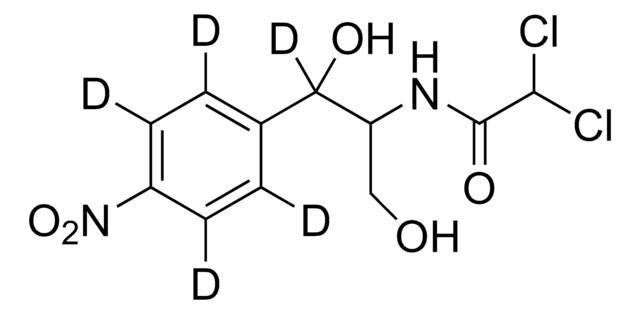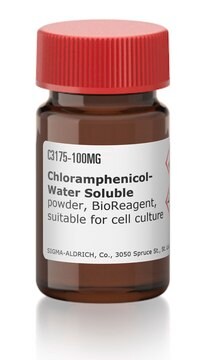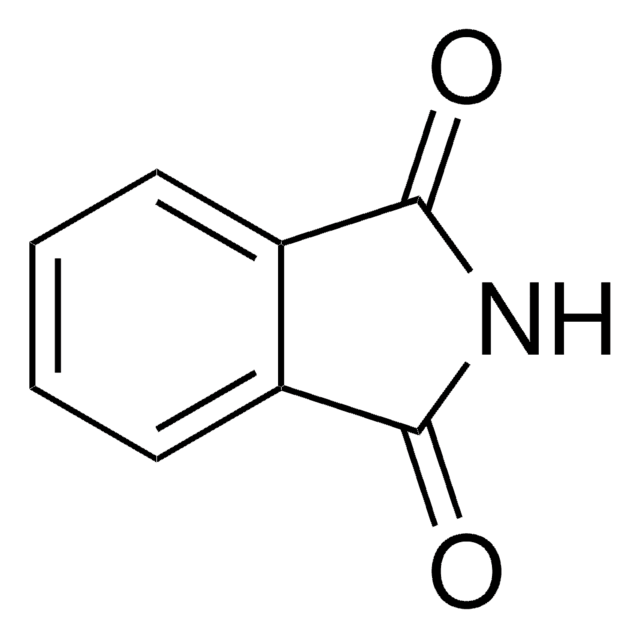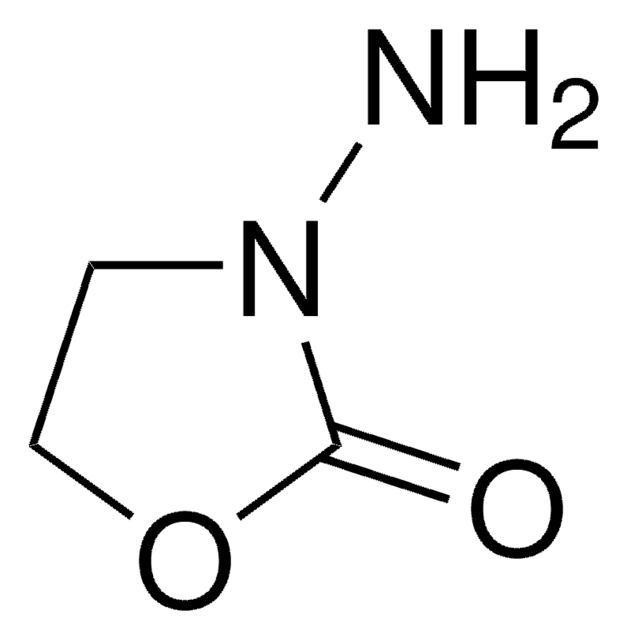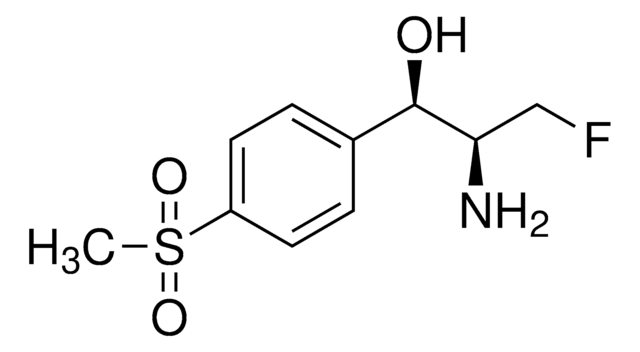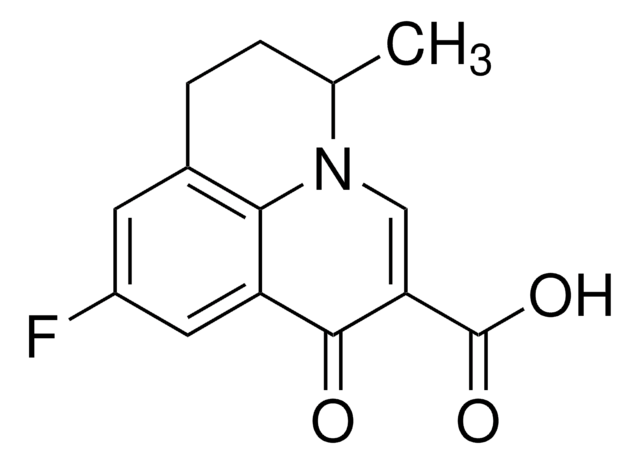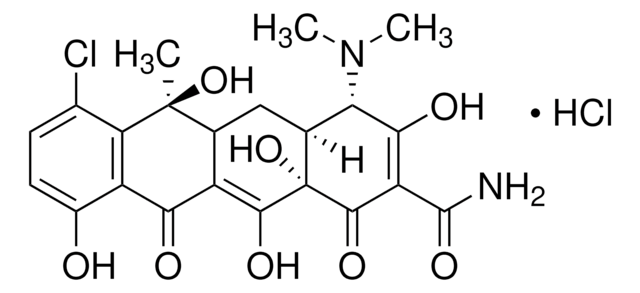Wichtige Dokumente
31667
Chloramphenicol
VETRANAL®, analytical standard
Synonym(e):
D(−)-threo-2,2-Dichlor-N-[β-hydroxy-α-(hydroxymethyl)-β-(4-nitrophenyl)-ethyl]-acetamid, D-(−)-threo-2-Dichloracetamido-1-(4-nitrophenyl)-1,3-propandiol, D-threo-2,2-Dichlor-N-[β-hydroxy-α-(hydroxymethyl)-4-nitrophenethyl]-acetamid, Chloromycetin
About This Item
Empfohlene Produkte
Qualität
analytical standard
Qualitätsniveau
Produktlinie
VETRANAL®
Assay
≥98% (HPLC)
Haltbarkeit
limited shelf life, expiry date on the label
Methode(n)
HPLC: suitable
gas chromatography (GC): suitable
mp (Schmelzpunkt)
149-153 °C (lit.)
Löslichkeit
H2O: insoluble 100% (practically)
Anwendung(en)
clinical testing
Format
neat
SMILES String
OC[C@@H](NC(=O)C(Cl)Cl)[C@H](O)c1ccc(cc1)[N+]([O-])=O
InChI
1S/C11H12Cl2N2O5/c12-10(13)11(18)14-8(5-16)9(17)6-1-3-7(4-2-6)15(19)20/h1-4,8-10,16-17H,5H2,(H,14,18)/t8-,9-/m1/s1
InChIKey
WIIZWVCIJKGZOK-RKDXNWHRSA-N
Suchen Sie nach ähnlichen Produkten? Aufrufen Leitfaden zum Produktvergleich
Allgemeine Beschreibung
Anwendung
Biochem./physiol. Wirkung
Resistenzmechanismus: Die Verwendung von Chloramphenicol-Acetyltransferase führt zur Acetylierung und Inaktivierung des Produkts.
Antimikrobielles Spektrum: Es handelt sich um ein Breitbandantibiotikum gegen grampositive und gramnegative Bakterien, das vor allem in der Augenheilkunde und in der Tiermedizin eingesetzt wird.
Vorsicht
Angaben zur Herstellung
Rechtliche Hinweise
Sie haben nicht das passende Produkt gefunden?
Probieren Sie unser Produkt-Auswahlhilfe. aus.
Ähnliches Produkt
Signalwort
Danger
H-Sätze
Gefahreneinstufungen
Carc. 2 - Eye Dam. 1 - Repr. 2
Lagerklassenschlüssel
11 - Combustible Solids
WGK
WGK 3
Persönliche Schutzausrüstung
Eyeshields, Gloves, type P3 (EN 143) respirator cartridges
Hier finden Sie alle aktuellen Versionen:
Besitzen Sie dieses Produkt bereits?
In der Dokumentenbibliothek finden Sie die Dokumentation zu den Produkten, die Sie kürzlich erworben haben.
Kunden haben sich ebenfalls angesehen
Unser Team von Wissenschaftlern verfügt über Erfahrung in allen Forschungsbereichen einschließlich Life Science, Materialwissenschaften, chemischer Synthese, Chromatographie, Analytik und vielen mehr..
Setzen Sie sich mit dem technischen Dienst in Verbindung.
